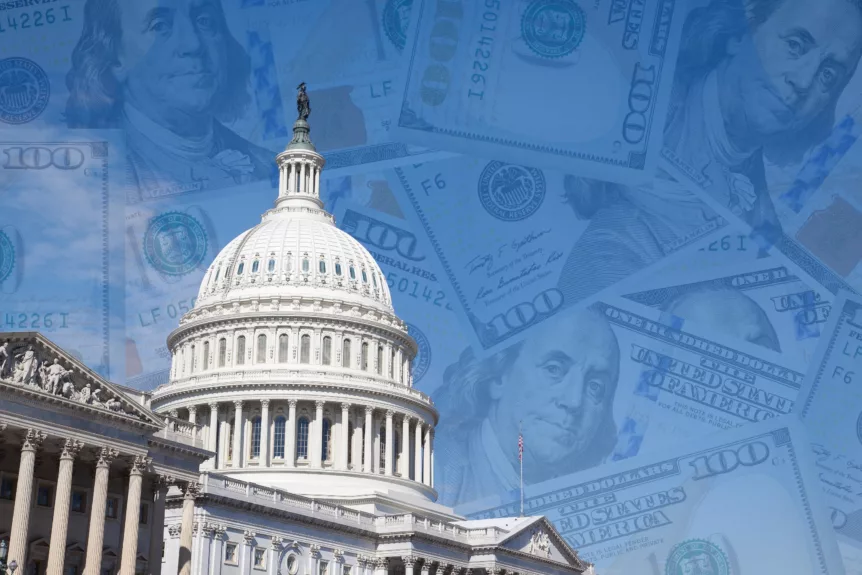Kristen Cheriegate | ICAST Policy Analyst
*******************
U.S. Department of Energy Launches Community Power Accelerator Prize
The Community Power Accelerator Prize is a $10 million prize competition designed to expand the ecosystem of community solar project developers by providing funding, resources, tools, and training to new and established developers. Eligible entities include U.S. community solar developers, including new developers, co-developers (organizations partnering with a project developer), and those expanding their community solar operations. The Prize aims to support community solar projects in becoming “credit-ready,” i.e., ready to seek funding from investors and philanthropic organizations. Credit-ready community solar projects have clearly defined financing, ownership, and subscriber models with a strong plan from conception to completion. The Prize has three phases and the deadline for eligible participants to compete in the first phase is March 15.
U.S. Department of Energy Announces the Buildings Upgrade Prize
The Buildings Upgrade Prize (Buildings UP) “is designed to accelerate the transformation of U.S. buildings into energy efficient and clean energy-ready homes, commercial spaces, and communities.” It is administered by the National Renewable Energy Laboratory and is part of the American-Made Program. Buildings UP is offering more than $22 million in cash prizes and technical assistance to accelerate widespread, equitable energy efficiency and building electrification upgrades. Community-based organizations, state and local governments, Indian tribes, building owners, utilities, nonprofit organizations, energy efficiency program implementers, and other organizations are encouraged to team up and apply. Buildings UP has four proposed phases, and Phase 1 opened for submissions on February 18, 2023.
Biden-Harris Administration Releases Blueprint to Decarbonize Transportation Sector
The U.S. National Blueprint for Transportation Decarbonization was developed by the U.S. Department of Energy (DOE), U.S. Department of Transportation, the Environmental Protection Agency, and the Department of Housing and Urban Development. It is a framework of strategies and actions to remove all emissions from the transportation sector by 2050 to help address the climate crisis and meet net-zero carbon emissions goals. Per DOE’s recent announcement, a well-planned transition to a decarbonized transportation system can mitigate the disproportionate impacts of greenhouse gas emissions on disadvantaged communities. It can also help address the unsustainable financial burden of transportation faced by low-income households.
New York Announces Investments in Energy Affordability, Building Efficiency, and Clean Air and Water
In her 2023 State of the State Address, Governor Kathy Hochul announced new investments in energy affordability, building efficiency, clean air, and clean water. Highlights include:
- A total of $200 million in relief for utility bills for up to 800,000 households earning under $75,000 a year that are not currently eligible under the State’s current utility discount program;
- $500 million in clean water funding to support water quality and infrastructure projects and protect public health,
- To leverage these investments, the Governor will develop Community Assistance Teams to help disadvantaged communities access financial assistance;
- The EmPower Plus Pilot,
- This Pilot will help 20,000 low-income families improve their homes by adding insulation, upgrading to energy-efficient appliances, and switching from polluting fossil fuel heating to clean, efficient electric alternatives.
More States Shift Toward Electric Vehicles
Washington, Oregon, and Vermont now require all new vehicles sold in the states to zero-emit by 2035. The rule covers passenger cars, light-duty vehicles, and medium-duty vehicles such as larger pick-up trucks and SUVs. The mandate kicks in gradually, starting with the model year 2026, requiring that 35% of new passenger vehicle sales are EVs. Then it increases by 6-to-9% each year until all vehicles covered by the rule must be zero emissions. Qualifying vehicles can be EV, solar-powered, hydrogen fuel cell, or plug-in hybrid vehicles if they can cover at least 50 miles on battery power.

